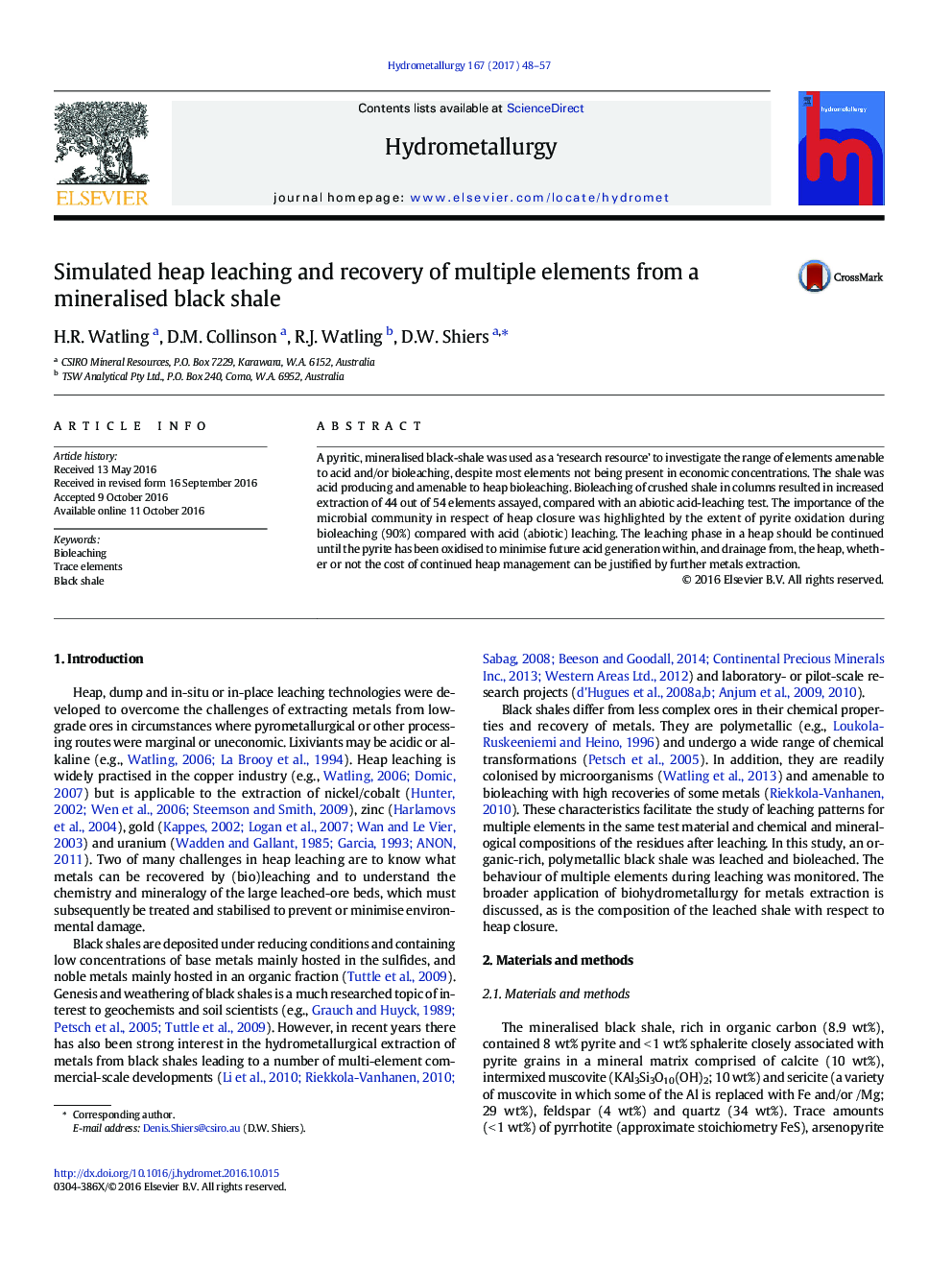| Article ID | Journal | Published Year | Pages | File Type |
|---|---|---|---|---|
| 4769385 | Hydrometallurgy | 2017 | 10 Pages |
â¢Bioleaching of a black shale ore increased extraction of 44 out of 54 elements compared with an abiotic test.â¢The results presented highlight the importance of microbial community during heap closure.â¢The leaching phase in a heap should be continued until the pyrite has been oxidised to minimise future acid generation.
A pyritic, mineralised black-shale was used as a 'research resource' to investigate the range of elements amenable to acid and/or bioleaching, despite most elements not being present in economic concentrations. The shale was acid producing and amenable to heap bioleaching. Bioleaching of crushed shale in columns resulted in increased extraction of 44 out of 54 elements assayed, compared with an abiotic acid-leaching test. The importance of the microbial community in respect of heap closure was highlighted by the extent of pyrite oxidation during bioleaching (90%) compared with acid (abiotic) leaching. The leaching phase in a heap should be continued until the pyrite has been oxidised to minimise future acid generation within, and drainage from, the heap, whether or not the cost of continued heap management can be justified by further metals extraction.
